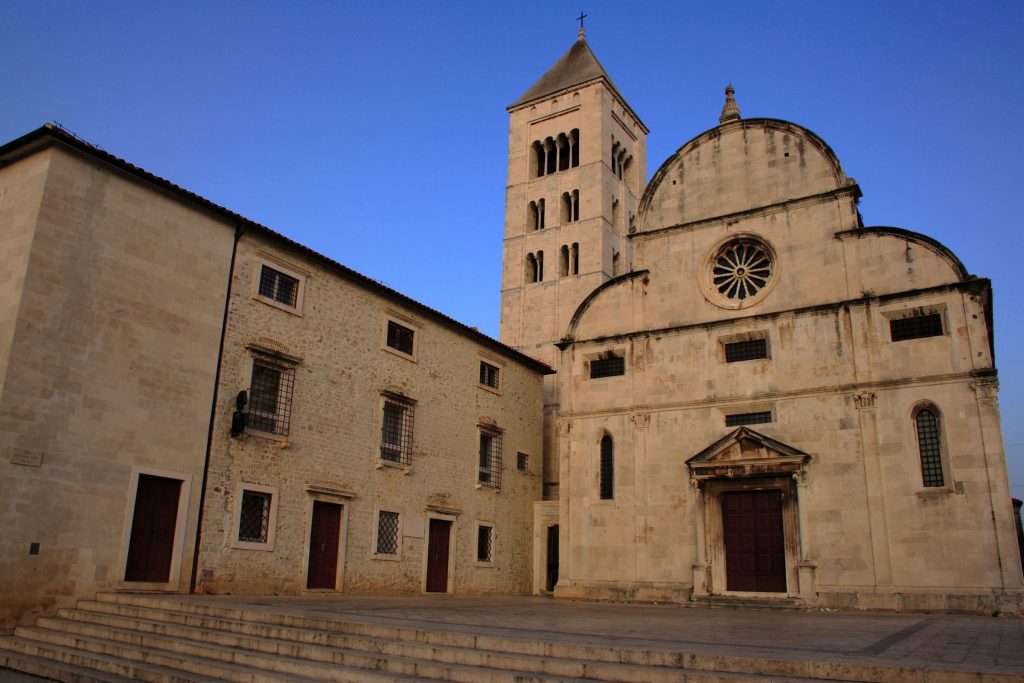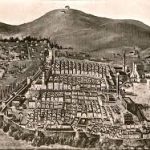The former Dalmatian capital of Zadar was named as among the top 20 Best European Destinations on January 19, 2016. An essential guide to 25 things you should now about the historic Croatian coastal town, not all of which you will find via Google…
1. “Zadar has the Most Beautiful Sunset in the World.”
You will not be in Zadar long before you notice the extraordinary sunsets, but the chances are that someone will mention them before the sun goes down, for Zadar has the most beautiful sunset in the world. Who says so? None other than Alfred Hitchcock, when he stayed in room 204 of what was the Hotel Zagreb. Judge for yourself in the video below.
2. Music from the Sea – the Amazing Sea Organ
One of the best Zadar attractions is the sea organ. The magic that is the Sea Organ, known as the Morske orgulje in Croatian is mesmerizing. Okay, it’s not magic, the music actually comes from the waves. The waves push air through 35 underwater pipes stretching across 70 meters, and the sound pops-up all along the promenade, known as the Riva. Read more from Chasing the Donkey, or simply listen in in the video below.
3. The Ancient Glass museum
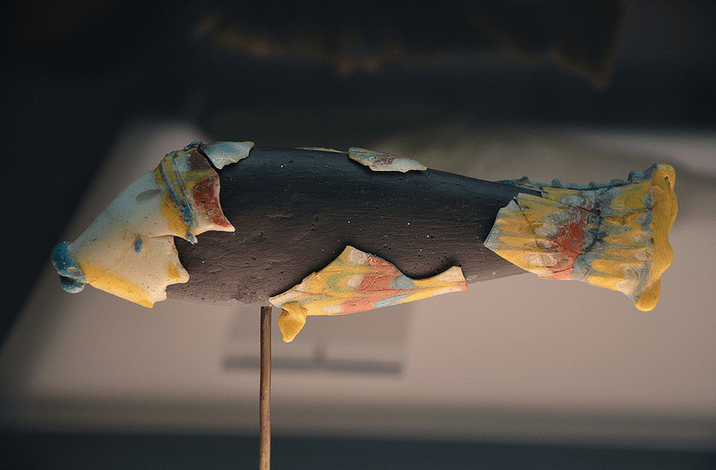
(Photo credit: Fish-shaped Glass Bottle, from Iader Roman necropolis, grave 59, 2nd half of 1st century AD, Museum of Ancient Glass, Zadar, by Carole Raddato on Flickr)
A visit to Croatia’s 5th largest city is full of history which includes this unique glass collection of over 5000 different glass objects from the first century BC all the way to the fifth century AD. Specific objects include things such as jars, files, and goblets. Of particular interest to me was to see how Roman royalty stored skin cream & perfume – 2,000-year-old skin cream jars – how amazing to see that survive. There are also iconic chalice’s that were used to celebrate mass, as well as delicate fish made from glass. All of the these have been delicately and expertly removed from various archeological locations scattered throughout Dalmatia. Read more.
4. Donat Cathedral
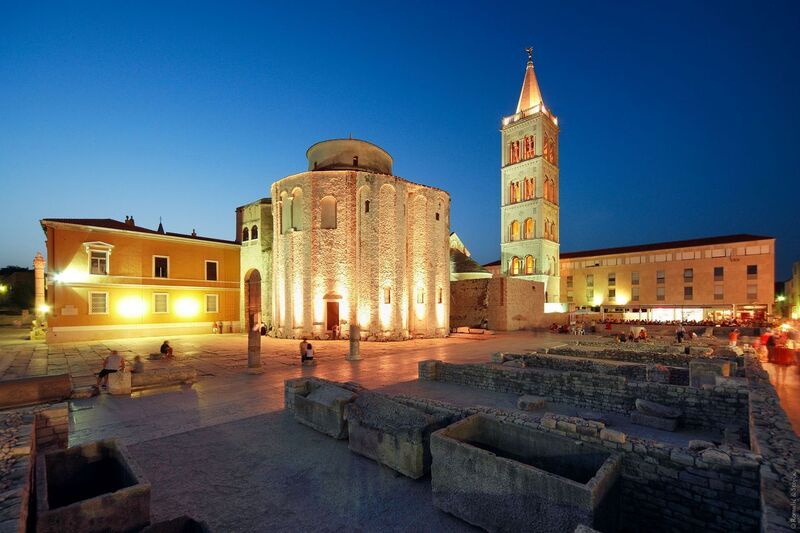
(Photo credit Romulic and Stojcic)
Those who are interested in architecture will want to make their way over to this church because it is widely considered to be among the finest examples of Byzantine church architecture. The rounded interior is designed so that the light that falls into the sanctuary makes varied patterns at different times of the day. However, because the inside of the building is somewhat plainly decorated compared to the exterior, those who are not architecture enthusiasts may only want to view the building from the outside rather than venturing in.
Once night falls, during summer you can enjoy the sounds of the Musical Nights Festival, A classical music festival that runs from July to August each year, bringing the 9th century Saint Donatus Church and Roman Forum to life.
5. Gold and Silver Museum
There are quite a few museums in Zadar, and this is one of the best. Head to the church of St Mary’s, and then turn left. There you’ll see a small door selling tickets. This museum with priceless treasures has been preserved by the Benedictine nuns and has been since WWII. Read more from Chasing the Donkey.
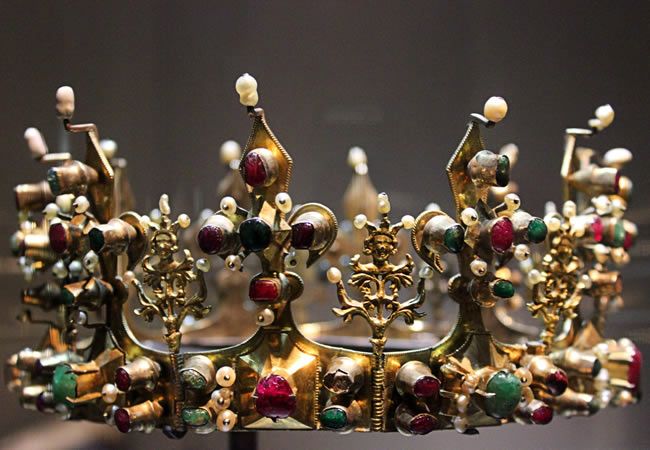
(Photo credit Zadar Tourist Board)
6. The ultimate meeting point? Greetings to the Sun
The Greeting to the Sun consists of three hundred multi-layer glass plates in the shape of a circle 22 meters in diameter. It is conceived as a spatial installation in the form of an amphitheater surrounded by stone blocks with a presentation of all Solar System planets and their orbits. Read more from Chasing the Donkey.
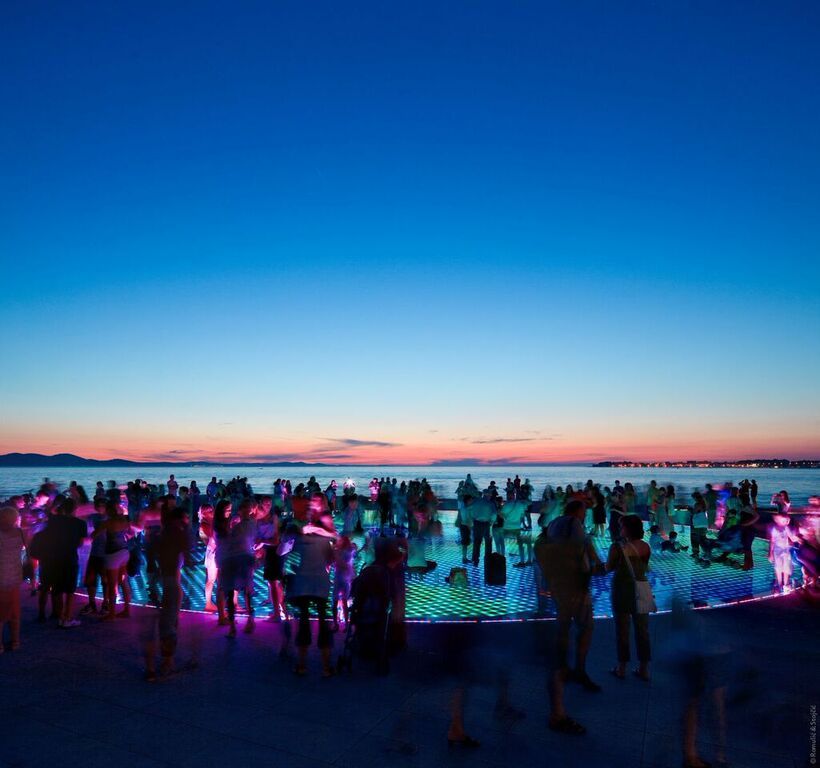
(Photo credit Romulic and Stojcic)
The main tourism bases covered, it is time to delve a little deeper…
Things with the name Zadar not related to the city
7. Zadar Cow from Hell movie

All we can say is ‘watch the trailer and judge for yourself’.
https://www.youtube.com/watch?v=uucfWW2Ezz8
Things named after Zadar’s former name not related to the city
8. Zara
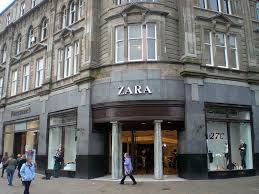
Getting there and around is obviously an important part of any tourist activity.
9. Ryanair base

Zadar’s tourism fortunes changed in 2007 when Ryanair commenced flights to the city. The airport, which had a road running through it (now closed) was demined, and start of the low-cost flight revolution to Croatia had begun. So successful was the cooperation that the Irish carrier established its first Croatian and 54th European base there. Initially tourists used it as a transit route to Split and the islands to the south, but more started spending time discovering Zadar itself.
10. Seaplanes
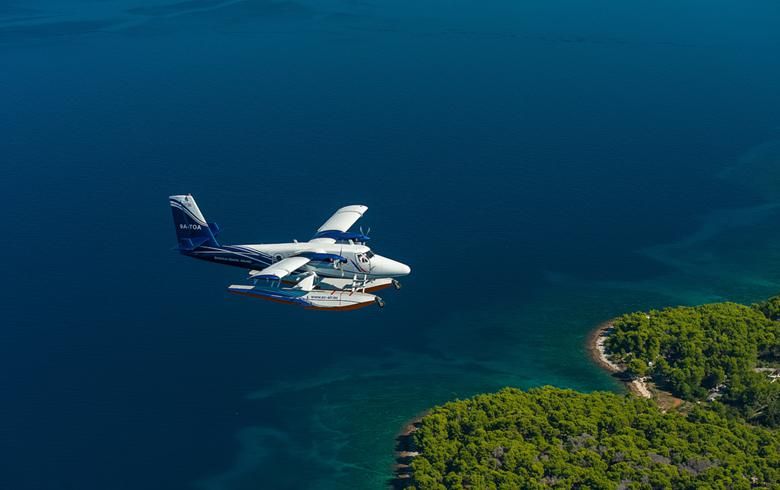
From one aviation revolution to another. The arrival of the first seaplane service in modern European aviation history in August 2014 brought the Twin Otters of European Coastal Airlines into play, and it was not long before Zadar Airport was added to the network. International flights to Ancona start next month, and both the airport and a seaport planned in downtown Zadar should enable tourists to island hop and enjoy greater flexibility in travel to and from Zadar.
11. Zadar’s answer to the Gondoliers of Venice – Be strong – One of Zadar’s best stories
What gondoliers mean to Venice, barkajoli mean to Zadar! For over 800 years they have been connecting the two ends of Zadar harbor with their small rowboats during all weather conditions and saving time of their faithful passengers. This tradition has been passed on from father to son for centuries and has survived despite the challenges of modern times.
12. Future marina
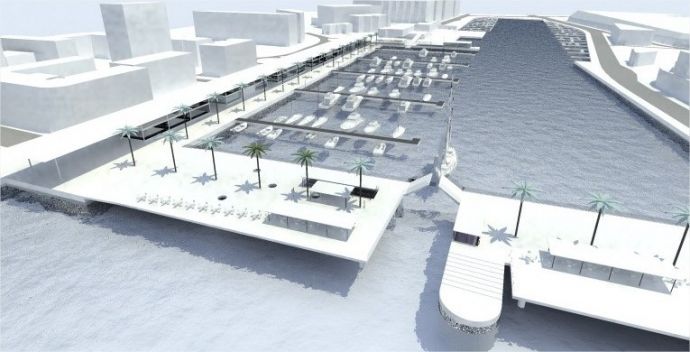
Zadar’s Jazine bay could soon be transformed into a ultra-modern marina for mega yachts. Entrepreneur Igor Karuc started presenting his planned project few weeks ago after almost for years of intensive work with a team of experts. A feasibility study is under way, several design options are in play and according to Kordić there are several serious investors interested in the project including several companies from the UK, Russia, Italy and France. Marina should have 300 commercial berths, 400 berths for smaller boats and 10 berths for mega yachts. Read more.
And a little atmosphere for the city:
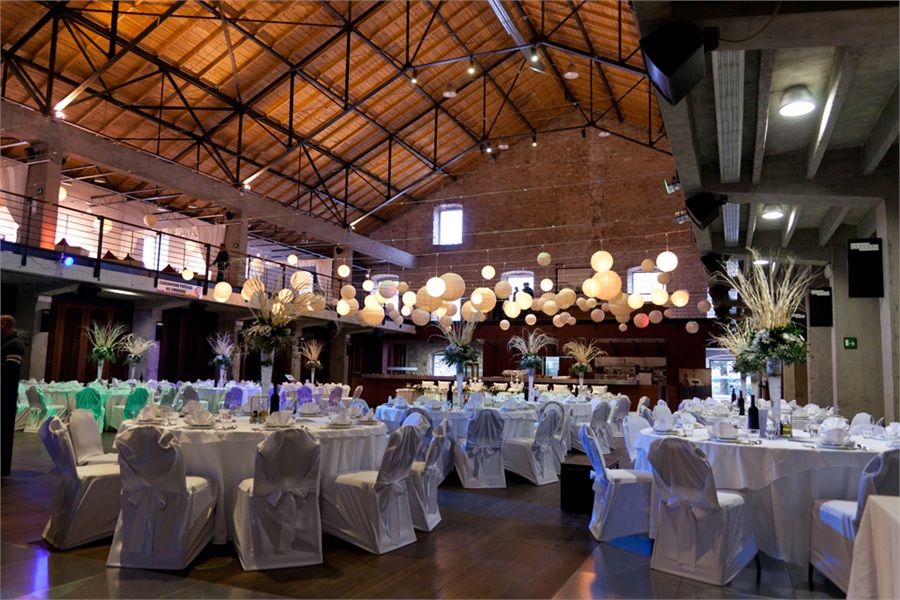
13. Make love, business, socialize – not war!
Zadar has one great building, a venue which in symbolical way shows us were the world has to go!
The Arsenal of Zadar, once a large port warehouse originally built in the 16th century, with a major reconstruction in 1752., was the centre of naval activity in Zadar and played an important role in the Venetian domination of the Adriatic. Both military and commercial vessels relied on the Arsenal for equipment, supplies, and weapons, with much of this produced within the facilities.
TODAY – no more weapons, no armory here, but now a meeting place, an “indoor town square” where people can exchange views and form new opinions, where people promote business opportunities, where all kind of events are organized, a place to simply socialize with good music and where people do marry and do love each other!
14. Love again … Do the special things for love!
Zadar will surprise you with its monuments, history and stories of the somewhat forgotten parts of its past, from the second you arrive until the very moment you are leaving. One of these stories is the story of Zadar Sphinx.
A love story
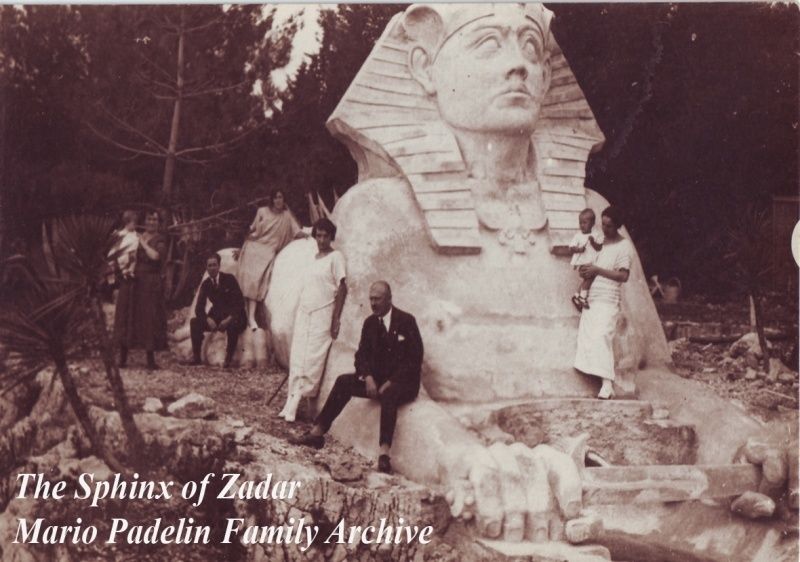
Villa Attilia was built in 1901 by a local artist, painter and historian Giovanni Smirich (Zadar, 1842-1929). After his wife’s death in 1918, he ordered the building of the Sphinx as a memorial to his beloved wife. There are not many sphinxes in this part of Europe left, and this one is the largest one. It is also a very special Sphinx since it was built in memory of a beloved woman: it is said that it grants love wishes.
15. Never surrender! A city of immense history
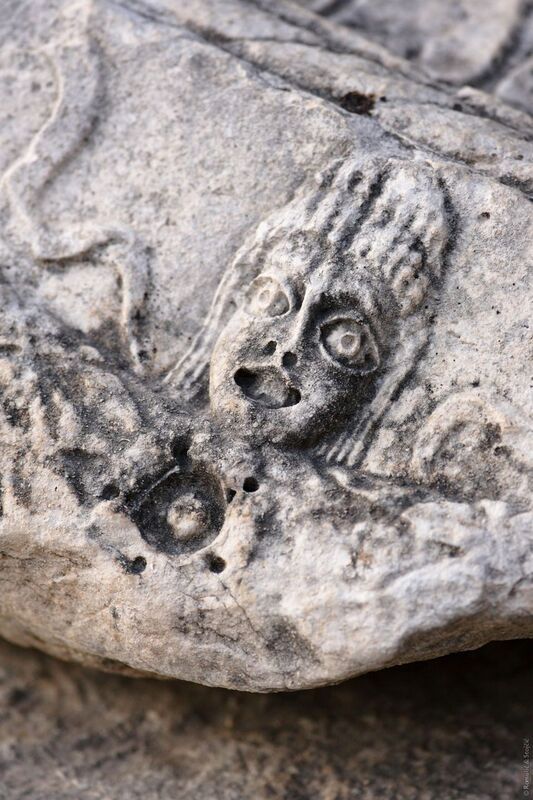
(Photo credit Romulic and Stojcic)
It is three thousand years old, a city of old, tumultuous and dynamic history, often destructed, looted, devastated, every time emerging from the ruins stronger, richer and more beautiful. Zadar appeared for the first time in history in the 4th century B.C. as a settlement of the Illyrian tribe of Liburnians – the name Jader was mentioned, and through history it changed into Idassa (Greek source), Jadera (Roman source), Diadora, Zara (during Venetian rule and later Italian) up to today’s name of Zadar.
After the year 59 B.C. Zadar became a Roman municipium, and in 48 B.C. a colony of Roman citizens.The Austrians (1797) took over the government of Zadar after the Venetians, to be followed by the French (from 1806 to 1813). After a short time of French rule, Zadar remained under Austrian rule until 1918. With the Treaty of Rapallo, Zadar fell under Italian rule, and after the II World War it was annexed to Croatia (within the framework of the Federation of Yugoslavia). Following the Republic of Croatia’s declaration of independence, Zadar finds itself eventually in the Republic of Croatia. And yet, from July 1, 2013, with Croatian entering into the European Union, Zadar is also a part of that state.
There are still alive citizens of Zadar, who have been living their entire lives in Zadar, but changed minimum 5 countries in it.
16. Celebrity Zadar
Various famous Croats were born in Zadar, but their names may not be familiar to international audiences, but one name which may well resonate, especially for Sound of Music fans is Georg Ludwig von Trapp (April 4, 1880 – May 30, 1947), an Austro-Hungarian Navy officer. His exploits at sea during the World War I earned him numerous decorations, including the prestigious Military Order of Maria Theresa. Later, von Trapp headed the singing family portrayed in the heavily-fictionalized musical The Sound of Music.
17 Maraskino liqueur
When in Zadar you have to try…
Maraschino is a liqueur originally from the city of Zadar in Croatia and Torreglia (Italy), obtained from the distillation of Marasca cherries. The small, slightly sour fruit of the marasca cherry tree (cerasus acidior), which grows wild along parts of the Dalmatian coast, lends the liqueur its unique aroma.

18. Calling all fish lovers: Croatia’s only Tuna, Sushi & Wine Festival
1st Tuna and sushi festival was organized in zadar in January 2015. And it already has grown and now it is Tuna, Sushi & Wine Festival, which is held in Zadar, February 3 – 7, 2016. The idea and the result is connecting the 2 very distant countries – Croatia and Japan – and exchange of its cultural, historical and natural attractions along with gastronomic and enological pleasures.
19. An Unusual Japanese Tour Guide
“Not many people in Croatia can claim to being fluent in the Japanese language, and even fewer people in Croatia can claim to being fluent in the Japanese language without any formal education…
“29-year-old Lovre Štavun from the Dalmatian city of Zadar is perhaps one of the few people in Croatia who can claim that. The Japanophile is putting his skills to use and recently he became the first formally schooled tour guide in the Japanese language in the Zadar county and one of the very few Japanese-speaking tour guides in Croatia.” Read more.
20. And just when you thought you had discovered it all, an underwater city in the Adriatic dating back 3500 years
Zadar, a city of ancient heritage with spectacular history all around. Including in the Adriatic Sea. A truly spectacular story of discovery just 20 kilometres from Zadar by a team from the University of Zadar. Read all about it here, or watch the video below, one of a series of five.
21. Nature gives us all – back to nature!
The Zadar region is a fantastic blend of beautiful islands, fertile plains and stunning mountains, located in the vicinity of the city: more than 300 islands including the island park of Kornati -a true Mediterranean paradise, plains rich with villages and vineyards where you can taste exquisite wines in family owned cellars, healthy activities and adventures in the hinterland of Zadar, including kayak or rafting safari on the Zrmanja river and a breathtaking mount Velebit, full of adventure possibilities and beautiful places like Paklenica national park. Yet to mention the Vransko jezero (Vransko Lake) – the largest natural lake in Croatia, a geomorphological rarity of the karst area since it is a cryptodepression filled with mildly salt water in which a specific community of sea organisms developed. The Park currently records 235 bird species, of which 102 are nesting birds, while for others the Park is an important wintering or transitory site. The total of 75 different bird species use Vransko Lake as their wintering grounds with more than 200,000 birds, which makes it one of the most important European wintering grounds. As much as 143 migratory bird species from Central and North Europe use this area as resting grounds before continuing their journey. Because of all of the above, in 1983 Vransko Lake was included in the List of European Important Bird Areas (IBA).
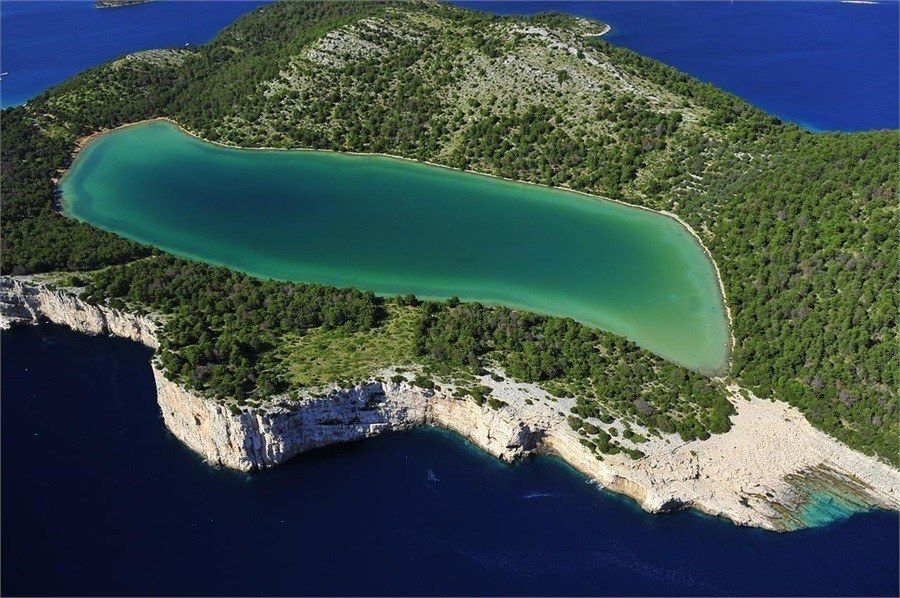
The diverse and exciting region of Zadar and the town itself gives you the opportunity to be in a real balance with nature or better to say, to feel as part of the nature, what we indeed are!
3 one of the very few destinations anywhere that is within 1,5 hours from 5 national parks – perfect for outdoor adventures etc?
22. The most popular YouTube video about Zadar has more than 1.5 million clicks – watch it here
23. Advent in Zadar, an alternative Christmas tree
Zadar is renowned for its “out of the box” thinking when it comes to tourist attractions, and the whole world knows about the Sea organ and the Greeting to the sun. So it is no wonder they decided to push the envelope when it came to this year’s Christmas decorations. Even though the traditional Christmas tree is still gracing the main square, one other modern attraction caught the attention of tourists, locals and media. As we were able to see for ourselves on December 26, 2015, Zadar’s Jazine harbour has the very first hologram Christmas tree in Croatia. Learn more.
24. A City of Firsts – university, operation, comic
Zadar is a city of firsts, reflecting its advanced seat of learning and its ancient heritage. Just a few firsts to mention are the first university in 1396, the first operation under anaesthetic in Europe, the first comic strip in Europe, and our absolute favourite, number 25 below…
25. Baby Daisy and Why Zadar Apartments are so Clean
And finally… Ever wondered why apartments in Dalmatia are so clean? Locals have been obsessing about keeping their homes clean for generations. Indeed the first ever vacuum cleaner in Croatia was used in Zadar, and is in proud private possession today. Baby Daisy is her name, and isn’t she beautiful? You can learn more in this link (in Croatian).
(Photo credit Ivica Ćurković)
Quite a journey! And if you are looking to sum it all up in one place, the Zadar Tourist Board have done rather a nice job.
With thanks to Secret Dalmatia, Chasing the Donkey and Coral Group for expert local knowledge.

